
Meeting Follow-up Emails: How and Why to Write Them
Meeting follow-up emails are key to maintaining collaborative momentum. Many people skip this step, leading to confusion and delays—something no one wants. This guide explains why follow-ups are crucial, with our tips and tricks for writing follow-ups and making meetings clear and actionable.
Why are Follow-up Emails Important After Meetings?
Follow-up emails are an essential part of effective meeting management. In order to fully change the way that we collaborate and work in teams, we need to shake the perception that the end of a meeting signifies the end of that discussion. If anything, the meeting is just your fire starter, and what happens post-meeting is the raging fire. To tie your meeting to its aftermath, you have to be proactive in continuing the conversation away from your Zoom meeting room, for example. Today, we are learning why and how to do this.
Right off the bat, you have two choices: will you be a traditionalist and do this manually, or will you let revolutionary meeting tech lead the way? Either way, you will arrive at a point where all participants are on the same page regarding the discussions and decisions that happened during the meeting in question. That's because you will reinforce key points, clarify any uncertainties, and keep the momentum going in your follow-up email (or you will after you read this), by outlining the next steps.
However, just because the destination is the same, does not mean the journeys toward it have mirrored each other. As I say, there is a choice. For a mundane task that carries so much importance, like the meeting follow-up email, we are strongly of the opinion that the adoption of an AI notetaker, such as Bubbles Notetaker, is critical. You might ask why, but do you really want to manually take notes of your meetings, before summarizing, writing action items + next steps, and sending it to each participant? I'd imagine the answer is no. In that case, take advantage of Bubbles' free notetaker - it records meetings, captures key points and generates a detailed follow-up email (personalized to each participant), saving time and improving accuracy.
Example Follow-up Email
Before we get our teeth into writing follow-up emails, we should look at an example of how it can be done efficiency and concisely. Check out this email from Bubbles:
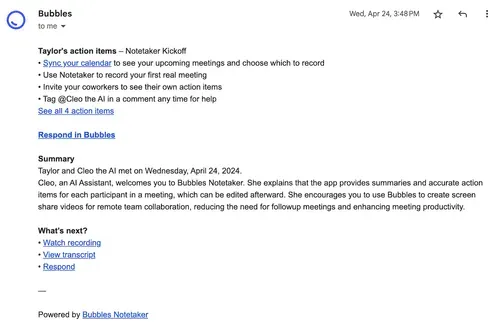
Why Do We Write Meeting Follow-up Emails?
To solidify the importance of having a meeting follow-up email system in place (manual or automated), I want to give you some stats here. According to a study by the Harvard Business Review, companies and teams that followed-up within an hour of a meeting were seven (yes, seven!) times more likely to have productive outcomes than those that waited longer. Also, a study by McKinsey & Company found that effective follow-up (you'll know what that looks like soon) can improve team collaboration by 33%, due to how it ensures team members are informed on the next steps.
Anyway, let's get back to the bread and butter of follow-up emails. We briefly touched on the benefit of these emails in tying things together post-meeting earlier, but let's go into more detail on why meeting follow-up emails are essential with these main reasons:
1. Clarify Key Points and Decisions
We don't want critical decisions and next steps to be forgotten about or lost in the everyday work burdens of the attendees. By writing follow-up emails, you will reiterate the main points and decisions made during the meeting. Not only will you jog memories, but you will make sure everyone is aligned on what was discussed and what's next.
2. Set Action Items in Stone
You have the opportunity to outline action items, responsibilities, and due dates again in a follow-up email, and you should take it. Ensure that everyone knows what is expected of them (boosting accountability) and keep the ball rolling.
3. Provide a Written Record
A follow-up email means you all have a written record of the meeting. This can be useful for future reference, helping team members remember exactly what was discussed and decided so that you can do a quick meeting recap. It is also great for accountability - people can't get away with dodging their tasks if it is clear. The follow-up is different in this sense compared to meeting notes, as this is concise and easy to quickly refer back to.
4. Improve Communication
Sending a follow-up email keeps communication going and enhances it within the team. You keep people informed consistently, and even those who have missed the meeting gain a platform for further questions or clarification. Bubbles can be great here, as it allows multiple forms of post-meeting communication within the meeting recording itself, keeping everything within one central meeting hub. You can send text responses or a Bubble (a video or video-and-screen recording) in response to your meeting recording to clarify or very quickly align on next steps. This can be particularly useful for complex topics that require further explanation.
5. For Professionalism
Writing a great, thorough follow-up email is something very professional, and it shows attention to detail and organization. You will come across as committed to the success of the team and projects.
Make your
meetings matter
Loved and trusted by 100,000+ users:
- Automatically Record and Transcribe Meetings
- Extremely Accurate Notes, Summaries, and Action Items powered by AI
- Works with Zoom, Google Meet, and Microsoft Teams
- Save time and follow-up with quick async videos
Simply connect your work Google or Microsoft Calendar to get started.
How Do You Summarize a Meeting in an Email?
Summarizing a meeting in an email involves capturing the main points, decisions, and action items in a clear and concise manner. Here are some steps to follow:
- Start with a subject line - make it clear and descriptive, indicating that the email is a follow-up.
- Include the key meeting details such as the date and time, the meeting type, and who the attendees are. Recipients will have more context this way.
- Summarize your key points and discussions - keep it concise and easy to follow.
- Outline all of the action items, along with the assigned team members and due dates. By making this clear, you will let your team members get on with it and reduce the need for a follow-up meeting.
- Provide a call to action that encourages recipients to reach out to you if they have any needs or questions. Keep it clear that you are a collaborative unit, even if you want to keep things flowing asynchronously.
- Close the email out professionally - express gratitude for their time and participation in the team meeting.
How to Write an Effective Follow-up Email
1. Be Prompt
Send the follow-up email as soon as possible after the meeting. We want the details to be as fresh as possible in everyone's mind so that the action items are addressed promptly and properly.
2. Use Clear and Concise Language
Keep the email clear and concise. Ditch jargon and long-winded explanations - they were likely covered in the meeting. Stick to key points and action items and make it easy to digest the information.
3. Customize the Email
Personalize the email to the specific meeting and audience. Use the recipients' first names to personalize the email and make it more engaging. Or, I have a better idea - let Bubbles automatically tailor it to each person for you, including specific notes or references that are relevant to the recipients.
4. Proofread
Always proofread before sending the email. I know it's a waste of time, but it needs to be done. However, it doesn't necessarily need to be done by you...
5. Include Attachments or Links
If there were any documents, presentations, or resources shared during the meeting, include them as attachments or provide links so that people get what they need to keep on working.
Additional Tips for Effective Meeting Follow-up Emails
Use a Template
Using a meeting minutes template can help ensure consistency and save time. Templates provide a structured format that makes it easier to replicate each time and organize information.
Automate Where Possible
Automating the follow-up process using tools like Bubbles Notetaker can significantly improve efficiency. Automation ensures that follow-up emails are sent promptly and that key information is accurately captured and communicated.
Follow Up on Action Items
There's no point ironing things out in a follow-up email if they still don't get done. Therefore, in subsequent meetings, refer back to the follow-up email to review the progress on action items. This keeps the team accountable and ensures that tasks are completed as planned.
Conclusion
Being able to write a great meeting follow-up email is crucial for maintaining accountability, improving communication, and ensuring the success of your team and projects. Luckily for you, you now know why and how to pay these emails attention. You also know that by using tools like Bubbles Notetaker, you can automate the process, saving time and ensuring accuracy. Jump straight on that today, and improve your workflows.
Collaborate better with your team
Get your point across using screen, video, and audio messages. Bubbles is free, and offers unlimited recordings with a click of a button.
.avif)
Collaborate better with your team
Get your point across using screen, video, and audio messages. Bubbles is free, and offers unlimited recordings with a click of a button.
.avif)



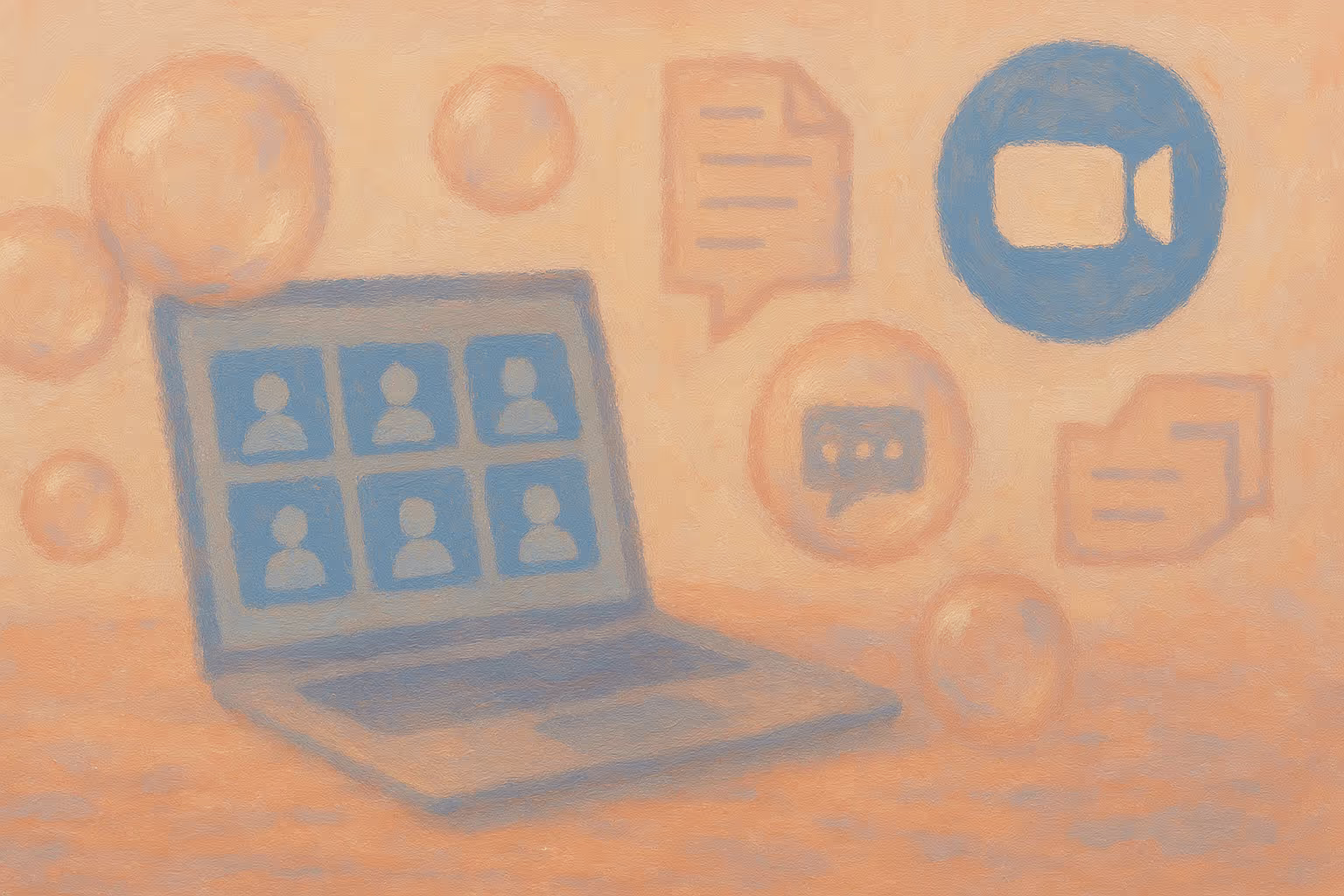


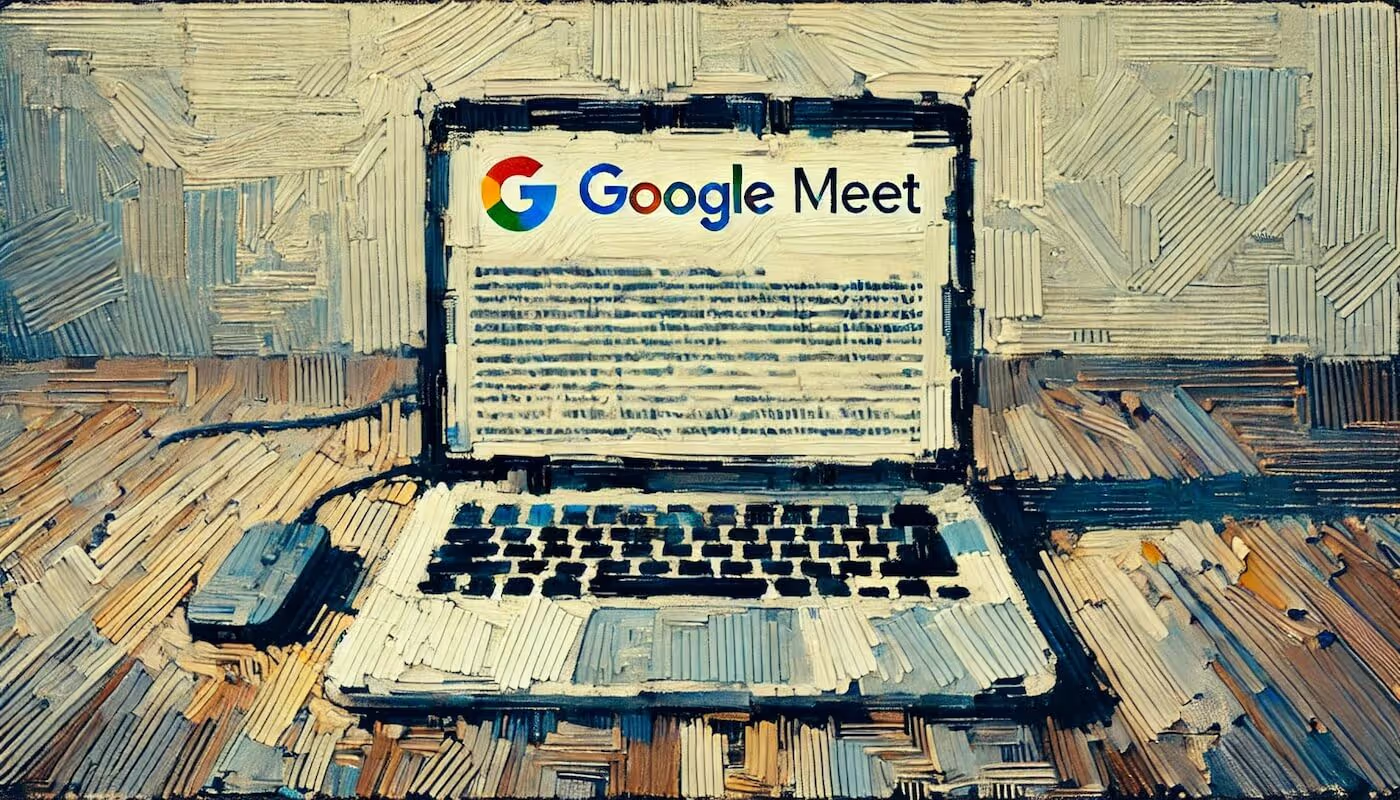

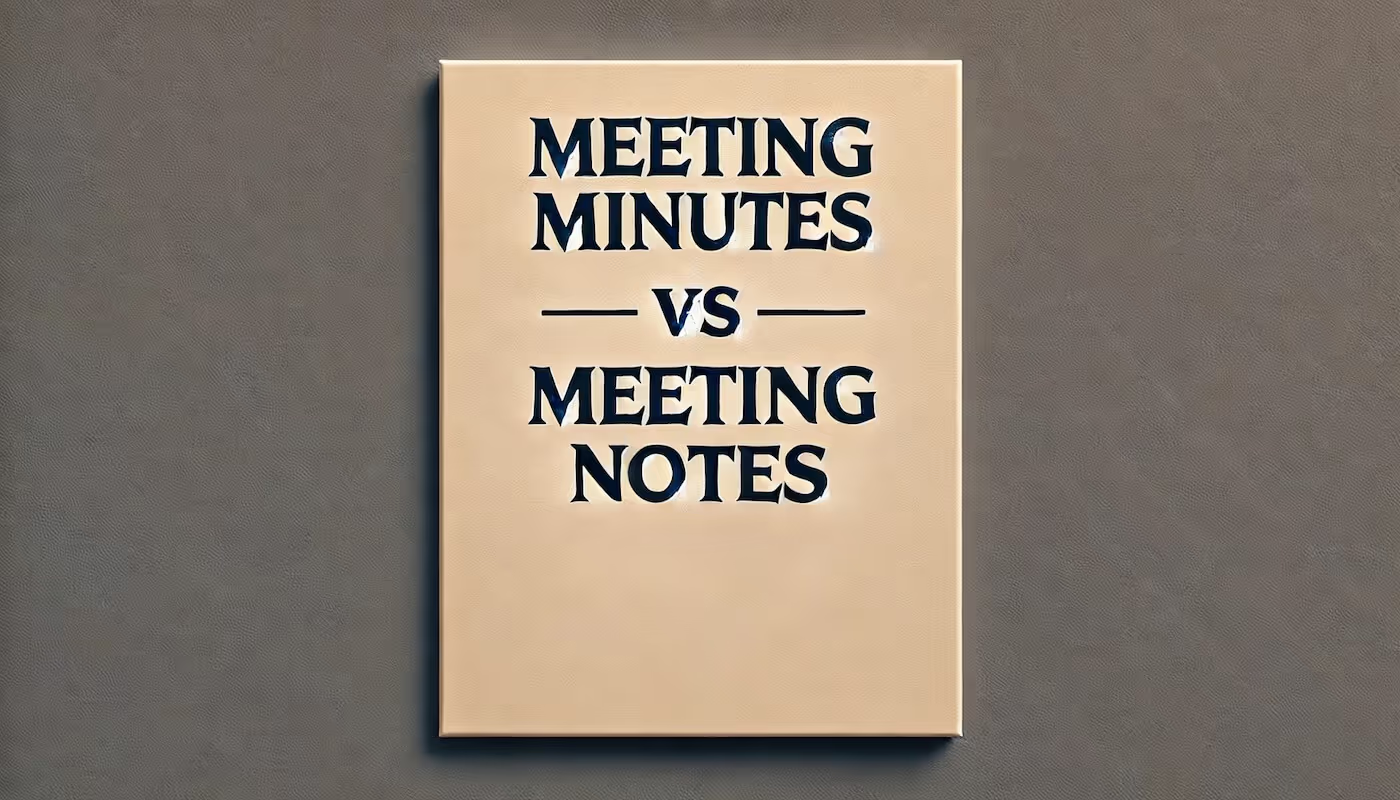

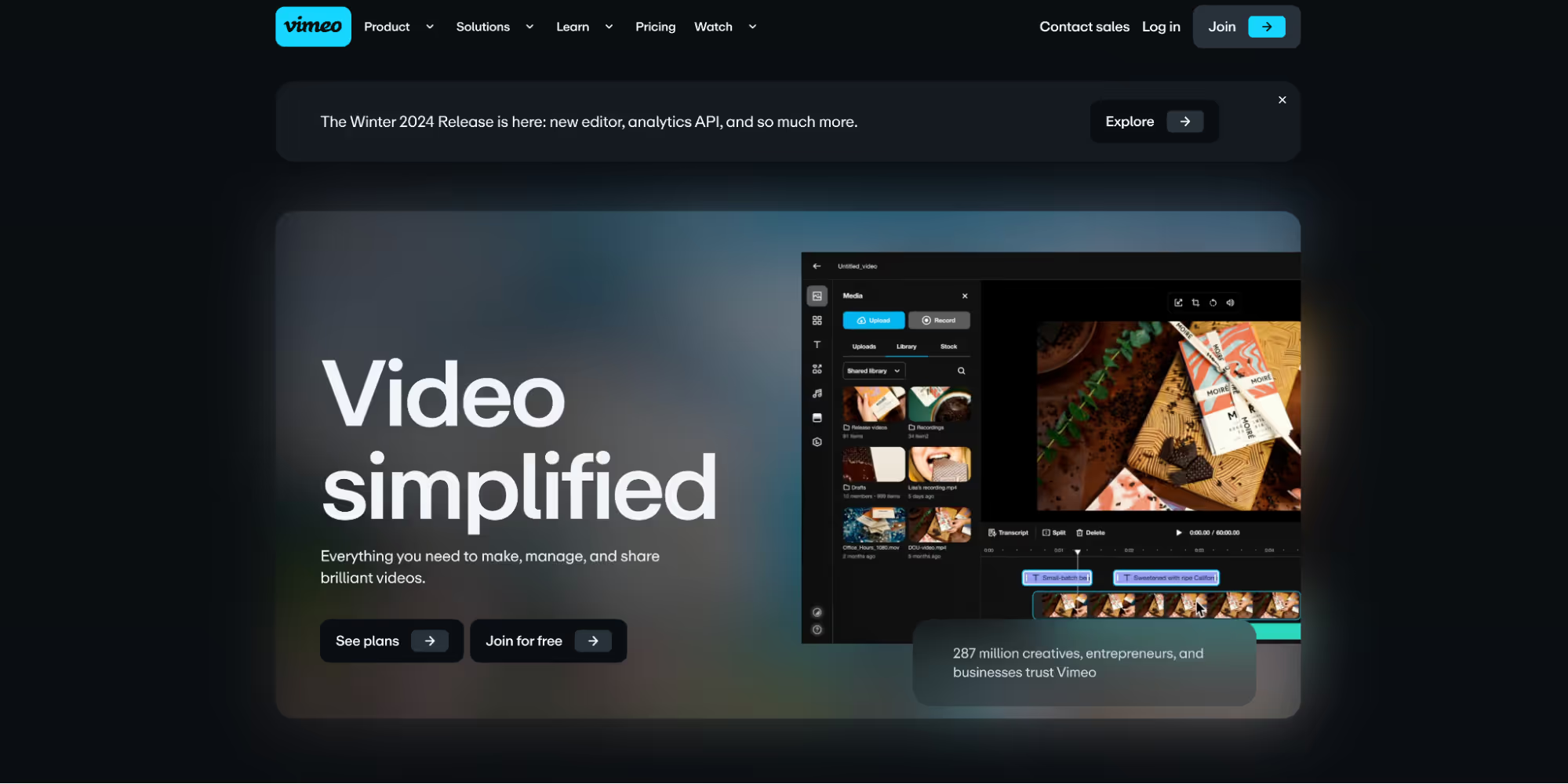

.avif)